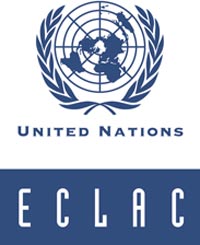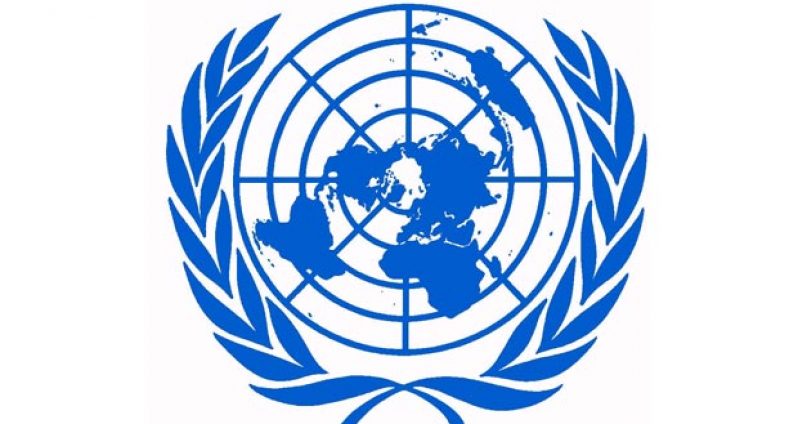– according to ECLAC’s latest report
THE number of Latin American people living in poverty in 2013 climbed to around 164 million (27.9 percent of the population), of which 68 million are in extreme poverty (11.5 percent of the Region’s inhabitants), according to projections that the Economic Commission for Latin America and the Caribbean (ECLAC) released yesterday.

Although a decline in poverty and extreme poverty rates was seen in the Region in 2012 (falling 1.4 and 0.3 percentage points, respectively, in comparison with 2011), the pace of that decrease has slowed sharply after a decade of progress, says the ‘Social Panorama of Latin America 2013’ report that was presented yesterday in Santiago, Chile.
In absolute terms, poverty remained stable in 2013 compared to 2012, when 164 million people were counted among the ranks of the poor, although the percentage of the population in this situation fell slightly (0.3 points). In contrast, the number of extreme poor, which totalled 66 million in 2012, climbed to 68 million in 2013 (a 0.2 percentage point increase).
These results are closely related to the macroeconomic performance of the Region, the document says. More specifically, the increase in extreme poverty has been caused by rising food costs that outpace general inflation.
“Since 2002, poverty in Latin America has fallen 15.7 percentage points and extreme poverty 8.0 points, but recent figures show a slowdown. The only acceptable number of people living in poverty is zero, which is why we call on countries to carry out structural economic changes to achieve sustained growth with greater equality,” said the Executive Secretary of ECLAC, Alicia Bárcena.
Six of 11 countries with available information in 2012 showed reductions in their poverty levels compared to 2011. In Venezuela, the rate fell 5.6 percentage points to 23.9 % from 29.5 %, in Ecuador it declined to 32.2 % from 35.3 %, in Brazil to 18.6 % from 20.9 %, in Peru to 25.8 % from 27.8 %, in Argentina to 4.3 % from 5.7 %, and in Colombia to 32.9 % from 34.2 % of the population.
In Costa Rica, El Salvador, Uruguay and The Dominican Republic, the values kept constant in comparison with 2011. In Mexico, poverty rose slightly in 2012 to 37.1 % from 36.3 % a year earlier.
In this edition of the Social Panorama report, ECLAC has explored the use of multidimensional approaches to evaluate poverty, which complements the conventional measurements based on monetary income.
“A multidimensional measurement of poverty limited to unsatisfied basic needs shows that shortages like the lack of access to drinking water or to appropriate sanitation systems still affect a significant number of people in the Region. That makes one wonder if the public policies intended to overcome poverty put enough emphasis on the achievement of minimum standards,” says the report, which also analyses the evolution of child poverty from a rights perspective.
In a similar vein, the report analyzes three aspects of well-being—space, time and co-existence—which tend to be ignored in discussions about Latin America. It examines problems such as atmospheric pollution and the high murder rate, as well as the use of time and other matters.
Regarding income distribution, although the level of concentration rose slightly in some countries in 2012, overall the downward trend continued to hold firm after a decade. In spite of this, high inequality still defines the Region in the international context.
On average, the poorest quintile of the population (20 % of households with the lowest incomes) gets just 5 % of a country’s total income, with extremes ranging from less than 4 % in Honduras, Paraguay and The Dominican Republic, to 10 % in Uruguay. Meanwhile, the share of the wealthiest quintile is 47 % on average, with that percentage rising from 35 % in Uruguay to 55 % in Brazil.
In matters of public social spending, the 2011 figures and the limited data available from 2012 (mainly from budgets, not layouts) suggest a trend of relative contraction, which doesn’t necessarily mean an absolute reduction in the resources allotted to social areas, but does signal attempts to curb the expansion of social spending and thereby bolster public finances.
The report points out that social spending showed accelerated growth in the second half of the 2000s, above all due to policies aimed at easing the impact of external shocks.
Finally, ECLAC confirms that the affiliation of employees to health and pension schemes has grown in the Region (in different magnitudes and from different starting points), revealing positive dynamics in the job market. Nevertheless, it’s still very low and relatively stagnant in some countries, and the lower the average affiliation rate, the more income is concentrated.


.jpg)











